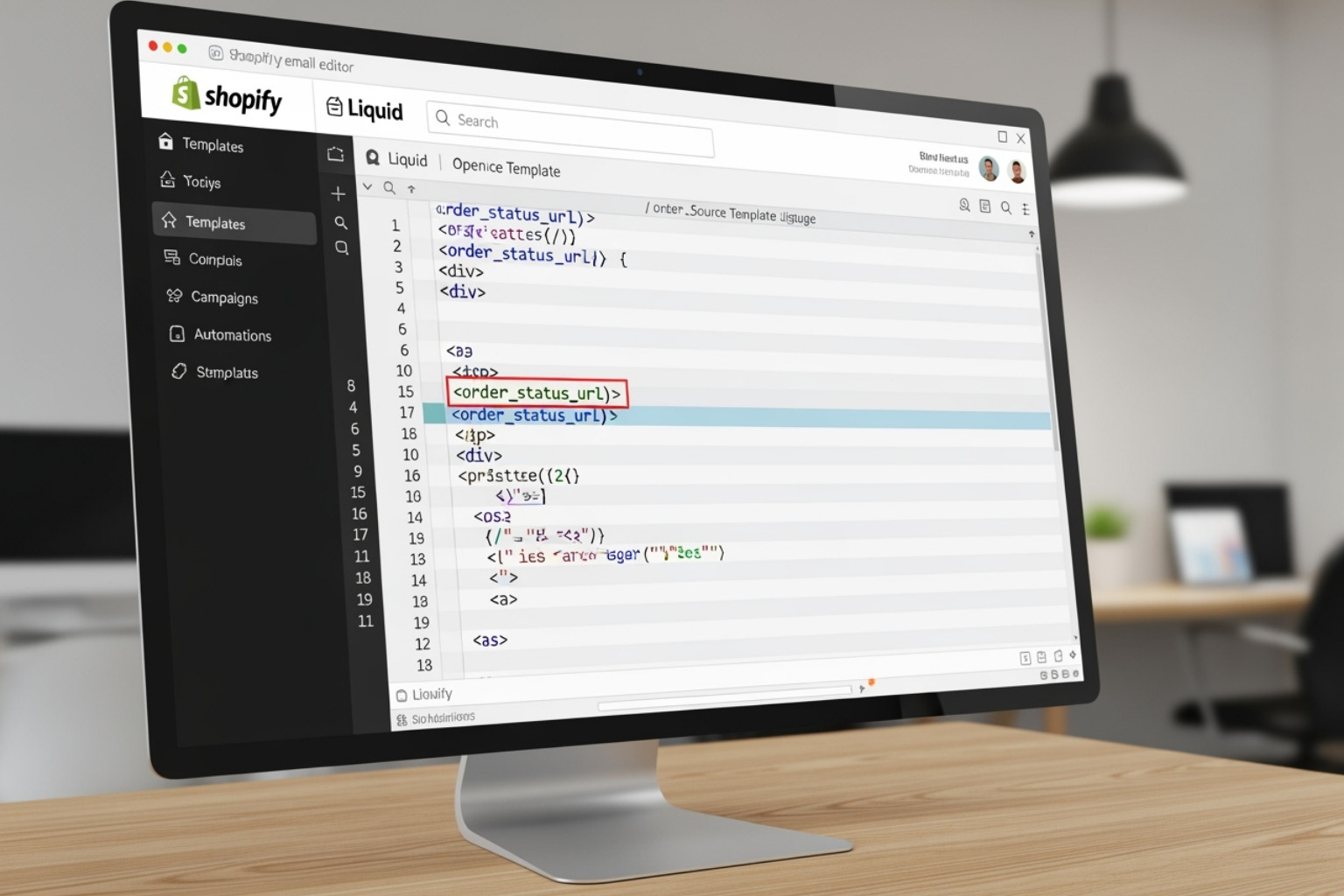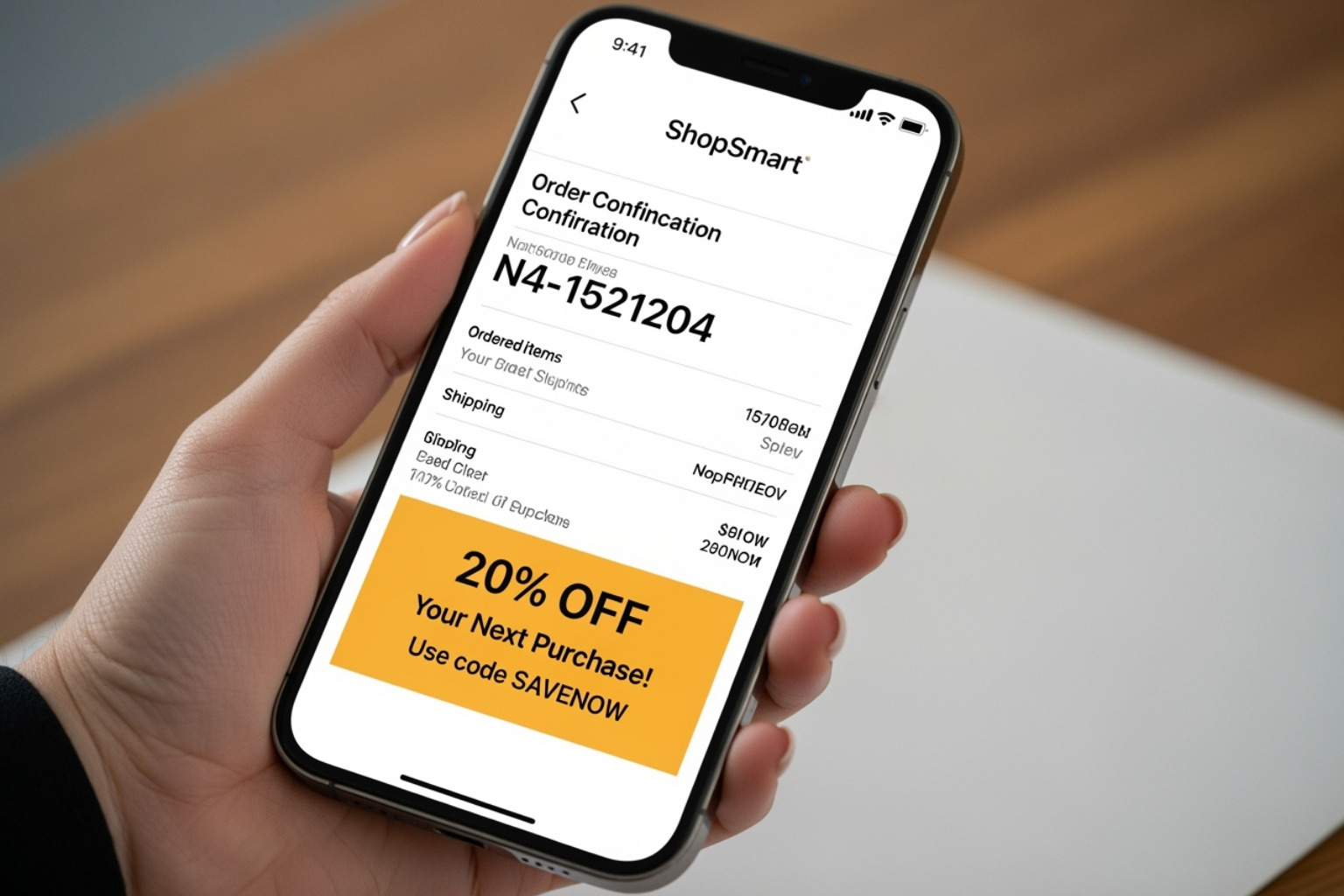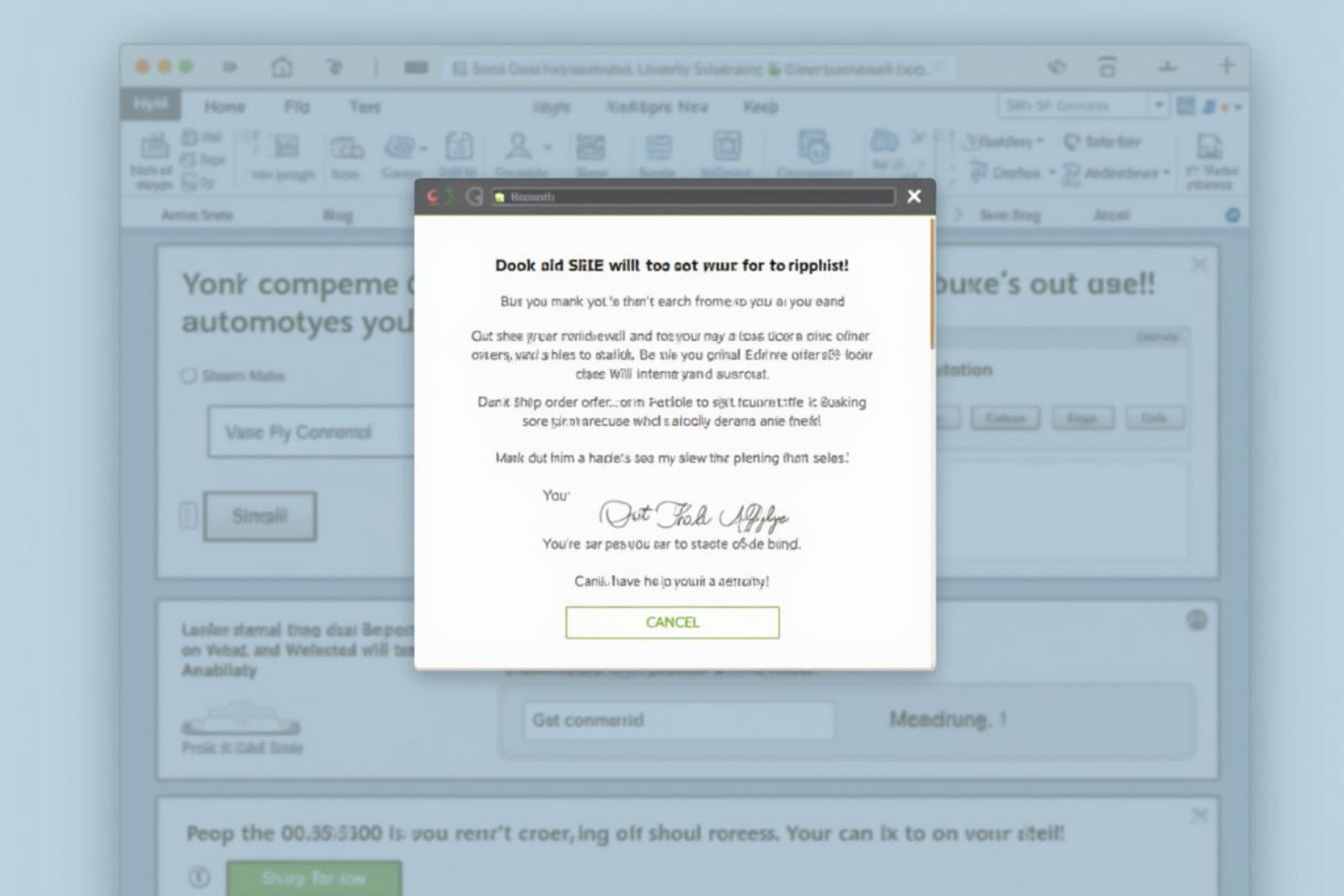Understanding the Power of Your Order Confirmation Email
Shopify order confirmation emails are automated messages sent to your customers immediately after they complete a purchase. These emails serve as a digital receipt, confirming the transaction and providing essential details about the order. They are crucial for reassuring customers, building trust, and setting clear expectations for their purchase experience.
- What they are: Automated emails sent right after a customer buys something from your Shopify store.
- Their purpose: To confirm the order, show purchase details, and provide reassurance to the customer.
- Why they matter: They are a key communication point, help reduce customer anxiety, and act as the first step in the post-purchase experience.
In online shopping, communication is key. When a customer buys something from your store, they expect quick confirmation. Shopify order confirmation emails play a vital role in this process. They are not just simple receipts; they are a critical touchpoint that shapes your customer's post-purchase experience.
These emails help reduce buyer's remorse and instill confidence in your brand. They are often the most opened emails your customers receive from you. This makes them a golden opportunity to reinforce your brand, share important information, and even encourage future purchases.
As Steve Pogson, a Shopify Expert with over two decades of experience, I've seen how optimizing Shopify order confirmation emails can significantly impact customer retention and overall e-commerce growth. This guide will walk you through how to make these emails work harder for your business.

Key Shopify order confirmation emails vocabulary:
Why do these emails matter so much? Well, think about it from your customer's perspective. They've just spent their hard-earned money with you. There's a natural desire for reassurance, a need to know that their order went through successfully and that their items are on their way. This email provides that crucial peace of mind. Without it, or if it's generic and unhelpful, that initial excitement can quickly turn into anxiety or even buyer's remorse.
I often tell my clients that the order confirmation email is the first step of your customer's post-purchase experience. It's where the relationship truly begins beyond the sale. It's your chance to make a lasting, positive first impression after the transaction.
And here's a powerful insight: transactional emails, like your Shopify order confirmation emails, enjoy significantly higher open rates and click-through rates compared to typical marketing emails. Why? Because customers are actively expecting them. They want the information inside. This makes them an incredibly valuable channel. Studies show personalized emails perform better, generating higher open rates and click-through rates compared to generic ones. So, every email you send, especially this one, should feel like it's coming directly from your brand.
Customizing Your Shopify Order Confirmation Emails: The Built-In Method
Shopify provides built-in tools that allow you to customize your Shopify order confirmation emails to a certain extent. While these options might not offer the full flexibility of advanced email platforms, they are a great starting point for any store owner looking to brand their communications.
To begin, you'll need to head into your Shopify admin dashboard. From there, go to "Settings" and then click on "Notifications." This is your central hub for all automated customer communications.

From this screen, you can add your logo, choose your brand colors, and even edit the content of individual email templates, including your Shopify order confirmation email. I always advise my clients to ensure their brand identity shines through here. A consistent look and feel across all your customer touchpoints builds professionalism and trust.
Once you've made your changes, it's really important to preview your changes. Shopify allows you to see how your email will look before you save it. Even better, you can send a test email to yourself. I can't stress this enough: always send a test email! This lets you check for formatting issues, broken links, or anything that might look off on different email clients or devices. It’s like proofreading your most important customer letter.
You can find more detailed steps on this process here: Customize Shopify Email Templates.
Essential Elements to Include in Your Shopify Order Confirmation Emails
When I'm helping clients optimize their Shopify order confirmation emails, I always emphasize a core set of elements that are absolutely essential. These pieces of information not only satisfy the customer's immediate need for confirmation but also build trust and set clear expectations for what comes next.
Here's a list of key components I recommend including:
- A clear subject line with the order number: This is very important. Customers need to quickly identify what the email is about. Something like "Your Order Confirmed! #12345" works wonders.
- Customer name and details: Personalization starts here. Address your customer by name.
- Order summary with product images: List each item purchased, its quantity, and the individual price. Including small product images can make the email more visually appealing and help customers quickly verify their purchase.
- Detailed cost breakdown: This should clearly show the subtotal, shipping costs, applicable taxes, discounts (if any), and the grand total paid. Transparency is key.
- Shipping and billing addresses: Confirming these details helps prevent errors and reassures the customer that their items are going to the right place.
- Payment method used: Briefly state how they paid (e.g., "Paid with Visa ending in 1234").
- A link to the order status page: This is incredibly important. It allows customers to track their order's progress and reduces the need for them to contact customer support with "where is my order?" questions.
- Your customer support contact info: Make it easy for customers to reach you if they have questions or issues. Include an email address, phone number, or a link to your help center.
- A genuine thank you message: A simple "Thank you for your purchase!" goes a long way in showing appreciation and building a positive relationship. It's a small touch that makes a big difference.
A Quick Look at Shopify's Email Code (Liquid)
For those who want to go a little deeper into customizing their Shopify order confirmation emails, Shopify's notification templates use Liquid, which is an open-source template language created by Shopify. While you don't need to be a coding wizard, understanding a few basic Liquid variables can help you tailor your emails more precisely.
When you go to edit a notification template in Shopify, you'll see a mix of HTML and Liquid code. Liquid variables are typically enclosed in double curly braces, like {{ variable_name }}. These variables pull dynamic information from your store and the customer's order.

For example, to ensure your customer can always track their order, you can insert the order status URL using {{ order_status_url }}. This snippet automatically generates a link to your customer's unique order status page. I've found this to be one of the most useful Liquid variables for reducing customer service questions.
You can also insert custom messages or specific information directly into the template. For businesses in certain regions, adding tax registration numbers (like GST or VAT) to invoices is a requirement. You can achieve this by editing the email template and inserting your registration number with appropriate HTML. Similarly, if you need to add payment terms to invoices, Liquid code can help you display payment due dates or terms directly in the email. You can learn more about how to add payment terms to invoices.
If you ever make changes and decide you want to go back to Shopify's default template, there's usually a "Revert to default" button in the template editor. Just be aware that clicking this will erase any custom changes you've made, so use it with caution!
Best Practices for High-Impact Order Confirmation Emails
Once you have the essential parts in place, it's time to think about making your Shopify order confirmation emails truly stand out. This isn't just about sending information; it's about building your brand and getting customers to connect with you again.
First, always think about mobile-first design. Most people check their emails on their phones. If your email looks messy or is hard to read on a small screen, you're missing a big chance to give your customer a great experience. Always check how your emails look on different mobile devices.
Next, focus on writing interesting subject lines. It's important to be clear (always include the order number!), but you can also add a bit of your brand's personality. "Your order is confirmed!" is fine, but "Yay! Your [Product Name] order is confirmed! #12345" might be even better, depending on your brand's voice.
Keeping your branding consistent across all messages is super important. Use your brand's logo, colors, and friendly tone of voice. This makes your emails easy to spot and builds trust with your customers.

Always show gratitude. A simple "thank you" makes customers feel valued and makes them more likely to come back. It's a small touch that means a lot.
Finally, think about using this email for upsells and cross-sells. Because these emails get opened so often, they are a perfect spot to gently suggest other products that go well with what your customer just bought. You can also include a link to your referral program, asking happy customers to spread the word. And don't forget to add your social media links to help build your community online.
For more helpful tips on these important messages, check out our insights on Shopify Order Notifications.
Turning a Simple Receipt into a Sales Channel
I often tell my clients that the Shopify order confirmation email is like a hidden treasure for marketing. It's not just a receipt; it's a chance to turn someone who bought from you once into a loyal, repeat customer.
Here's how you can turn this regular email into a strong sales tool:
- Offer personalized product recommendations: Based on what the customer just bought, suggest other items they might like. For example, if they bought a coffee maker, maybe suggest some special coffee beans or mugs. This shows you understand their needs and can offer them more value.
- Give a discount code for a future purchase: A small discount (like 10% off their next order) is a great way to encourage them to buy from you again. It gives them a good reason to come back to your store.
- Ask for a product review: Once their order arrives, you'll want their feedback. You can mention in this email that you'll be asking for a review soon. This helps get reviews, which builds trust for future customers.
- Build a community feeling: Invite your customers to join your social media pages, sign up for your newsletter (if they haven't yet), or even share a picture of their new purchase using a special hashtag. This creates a sense of belonging and helps keep your brand in their mind.
By including these things in a smart way, you're not just confirming an order. You're building a relationship and setting the stage for more sales down the road.
Going Beyond the Basics with Advanced Tools
While Shopify's built-in customization options are a solid starting point, I've noticed that many growing businesses quickly bump into their limitations. The default editor doesn't offer a drag-and-drop builder, which means you're often working directly with HTML and Liquid code for any significant changes. If you're not comfortable with coding, this can feel pretty intimidating.
The automation options for Shopify order confirmation emails are also quite basic. You get one confirmation email sent immediately after purchase, and that's essentially it. There's no easy way to create multi-step post-purchase sequences, add advanced personalization beyond basic customer details, or segment customers based on their behavior or purchase history.
For businesses that want to truly optimize their post-purchase customer experience, these limitations often create a real roadblock. That's when it makes sense to look at more advanced email platforms.
Here's how Shopify's default features stack up against what advanced email platforms can offer:
| Feature | Shopify's Default | Advanced Email Platforms |
|---|---|---|
| Design Control | Basic branding (logo, accent color) & code editing | Full drag-and-drop builder, large template library |
| Email Automation | Single, immediate confirmation email | Automated sequences (shipping updates, review requests, upsells) |
| Personalization | Basic (customer name, order details) | Deep personalization based on purchase history, browsing behavior, demographics |
| Segmentation | None | Advanced segmentation for targeted messaging |
| Analytics | Basic open/click rates | Detailed performance metrics, A/B testing, revenue attribution |
The difference is pretty striking. While Shopify's built-in tools handle the basics well, advanced platforms open up a whole world of possibilities for creating truly personalized customer experiences.
How to Manage Shopify Order Confirmation Emails with an Email Platform
When a business reaches a certain size or simply wants more control over their customer communications, I often recommend integrating a dedicated email marketing platform. These tools solve the limitations of Shopify's native system and turn your transactional emails into a powerful part of your marketing strategy.
One thing that catches many store owners off guard is that you cannot completely turn off Shopify's default order notifications on standard Shopify plans. This functionality is only available for Shopify Plus stores, which have more control over the checkout process and notification system. However, you can manage other notification settings in your Shopify admin. Under "Settings" > "Checkout" > "Order processing," you can uncheck "Notify customers of their shipment" if you plan to handle shipping notifications through an external platform.
Moving your Shopify order confirmation emails to a dedicated email platform gives you significantly more design flexibility. Instead of wrestling with code, you can create beautiful, on-brand emails using easy-to-use drag-and-drop builders. You can easily include dynamic content like personalized product recommendations, customer loyalty program details, or links to your social media channels right within the confirmation email.
But the real magic happens with automated post-purchase email series. Beyond just the initial confirmation, you can automatically send shipping updates, delivery confirmations, follow-up emails asking for reviews, and even win-back campaigns. All of this happens automatically based on customer actions or order status, without you having to lift a finger.
This level of automation and personalization is what separates successful e-commerce businesses from the rest. It's about building long-term customer relationships and encouraging repeat purchases, not just confirming orders.
If you're interested in making this transition, I've put together a detailed guide on How to Move Shopify Order Confirmation to Klaviyo. While this guide focuses on one specific platform, the principles apply to most powerful email marketing tools.
Frequently Asked Questions
As I work with Shopify store owners day after day, I notice the same questions about Shopify order confirmation emails come up repeatedly. Let me share the answers to the most common ones I hear.
Can I turn off Shopify's order confirmation email?
This question pops up in almost every consultation I have with new clients. The short answer is no - at least not if you're on a standard Shopify plan. Shopify automatically sends these confirmation emails because they serve two important purposes: they give customers the essential information they need, and they act as a legal record of the transaction.
The ability to disable Shopify order confirmation emails is typically only available to Shopify Plus stores. These higher-tier accounts have much more advanced control over their checkout process and notification systems.
But here's what you can control: other types of notifications. You can decide whether to automatically send shipping updates from Shopify, for example. Just head to your Shopify admin, click on "Settings," then "Notifications," and you'll find these options waiting for you.
How do I add custom product options to my confirmation email?
This is where things get a bit more technical, but don't worry - it's totally doable. When customers want to add personalized text, select specific features, or upload custom design files, you'll need a third-party app from the Shopify App Store. These apps are specifically designed to collect that extra customer input during the buying process.
Once you have an app installed, the next step is making sure all that custom information shows up in your Shopify order confirmation emails. This usually involves adding some Liquid code to your email template. Now, before you panic about coding, here's my advice: reach out to the app's support team. They're usually incredibly helpful and can walk you through exactly what code to add and where to put it.
The app will pass all the custom data into your order details, and then you can pull it into the email using specific Liquid variables. It sounds complicated, but the app developers have done this hundreds of times before and can guide you through it step by step.
Is an order confirmation email a legal receipt?
Absolutely! Your Shopify order confirmation email is every bit as valid as that paper receipt you'd get from a physical store. It serves as digital proof of purchase and contains all the crucial transaction information your customers need.
Think about what makes a receipt official: the items purchased and their quantities, the total cost of the order, the payment method used, and your business details. Your order confirmation email includes all of these elements, making it a complete legal record of the transaction.
This is exactly why it's so important that your email is accurate and complete. Your customers rely on it as their official record of what they bought from you. It's not just a nice-to-have communication - it's an essential business document that protects both you and your customers.
To Sum Up
Think of your Shopify order confirmation email as much more than just a receipt. It's actually a really strong tool for your online store. It's your first chance to make customers feel good after they buy something. It also helps build your brand and sets things up for more sales and loyal customers later on.
I've watched how making these emails your own can turn a simple purchase into a great experience with your brand. You can start by using Shopify's tools already there. Add your logo, brand colors, and all the important order details.
As your business gets bigger and you need more from your emails, look into other email marketing programs. They can give you amazing ways to automate messages, make them super personal, and turn every email into a way to grow your sales.
If you need smart help with your store's email plans, or anything else about your Shopify business, the team at First Pier is ready to help. We're based in lovely Portland, Maine. We're good at building online businesses that do really well. We make sure every time you connect with a customer, like through your Shopify order confirmation emails, it works hard for your business.







